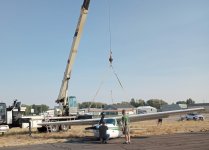Richgj3
BENEFACTOR
LI,NY
This last bit of discussion about the catastrophic loss of a control surface on the turbine float plane made me try to think about what I might do if some similar disaster occurred on my PA-11. Let's say an aileron/rudder/elevator cable breaks or comes disconnected, or a pulley/wheel falls loose, or a pivot pin falls out, or etc. Hmmm. My poor little brain was immediately tied in knots. With the elevators I did have some side thoughts to engage as regards the trim cables; but all in all, I could not get far in trying to think of alternatives for quickly developing alternative methods of control sufficient to execute a survivable crash/landing. I think I remember a story of someone having some failure of control for elevators but managed to survive with a mix of trim and throttle control. A full on discussion of such events here would occupy the next two years! But it occurs to me to wonder if anyone has ever done a full on study of these possibilities for a simple cub-styled plane and written a book about it. Anyone heard of such?
I am familiar with two such events in small Pipers. A PA11 lost up elevator cable and was landed safely by the instructor using trim and power. This happened many years ago at what is now Bayport Aerodrome. The instructor was Tom Murphy, the most natural pilot anybody around here ever met. I swear he was part bird. Maybe Jonathan Livingston Seagull.
The second was not so good. A PA18 glider tow lost down elevator on take off with glider in tow. Pitched up, stalled and resulted in a fatality. Granted in the first case the pilot had more time to analyze the situation than the second pilot did.
Rich





